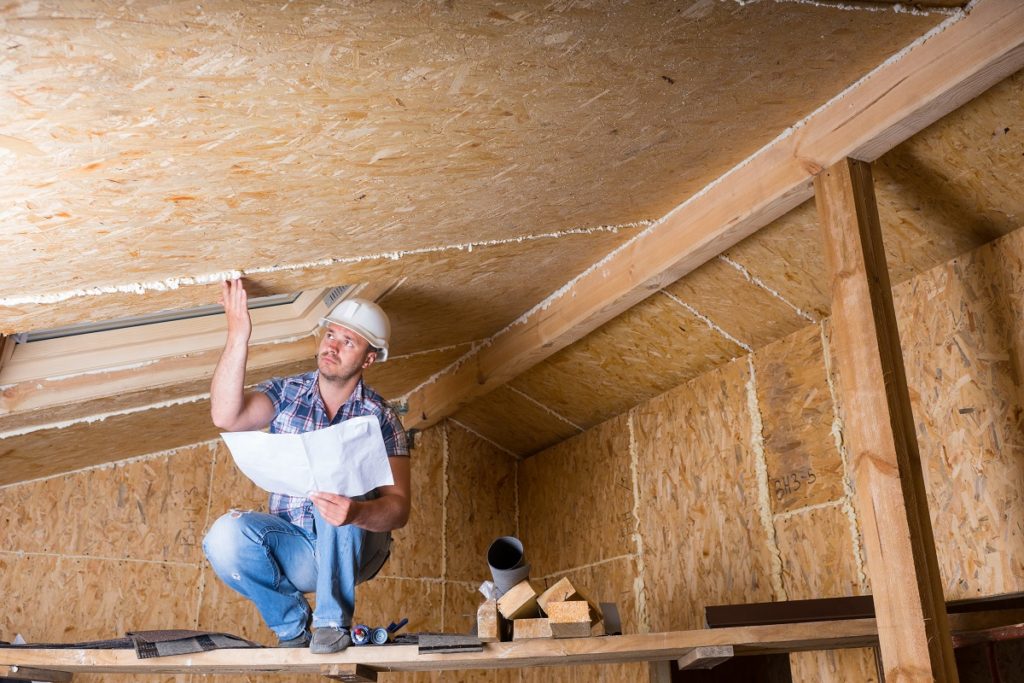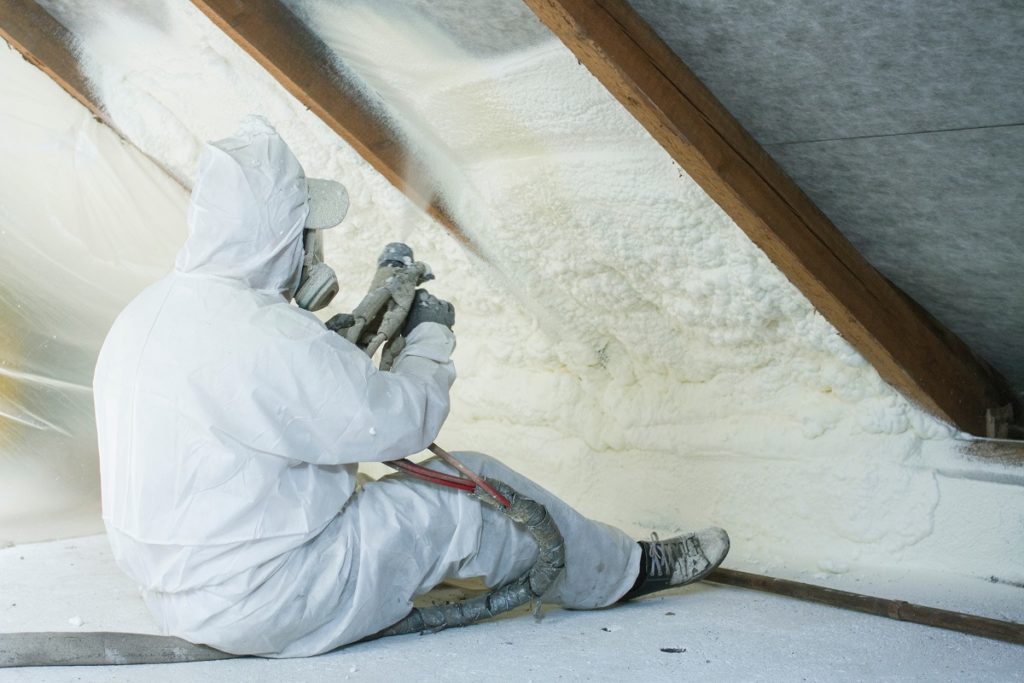Crawl spaces are the hollow areas set between the ground and the first floor of your house. They are commonly found in homes without basements, with their main purposes being the following.
- Cost-effectiveness. Leveling the ground before construction can be expensive, but elevating the house and creating a crawl space eliminate this cost.
- Convenience. Plumbing and electrical systems can be run through the crawl space, making it easier for homeowners to inspect and maintain these systems, as well as more convenient for plumbers and technicians to repair if needed.
Despite these benefits, the crawl space under your house can also be the cause of major complications, including the following.
- Moisture. Moisture from the ground can seep into the floors, despite the elevation, and rot your home’s wooden support structure or cause mold growth.
- Heat loss The bare earth in crawl spaces can rob the heat from the warm floor above if not insulated properly.
- Pests Like most dark and moist areas, crawl spaces attract pests like termites, rats, and raccoons.
The crawl space is often neglected and left to the elements, resulting in the problems stated above. As such, the crawl space must be periodically inspected to avoid the headache of fixing costly problems.
If you’re buying or have recently bought a house with a crawl space, the aforementioned complications are things you must look out for. Luckily, with the right maintenance, such as adding insulation to your crawl space, you can prevent or remedy these problems.
Ventilation
Since moisture is one of the biggest causes of problems within a crawl space, it’s crucial to improve ventilation in the area. With vents, air from the outside can enter the crawl space and prevent moisture buildup.
Crawl space ventilation is actually a part of building codes. According to the International Residential Code (IRC) Section 408…
“The under-floor space between the bottom of the floor joists and the earth under any building (except space occupied by a basement) shall have ventilation openings through foundation walls or exterior walls.
The minimum net area of ventilation openings shall be not less than 1 square foot for every 150 square feet of under-floor space area unless the ground surface is covered by Class 1 vapor retarder material.
Where a Class 1 vapor retarder material is used, the minimum net area of ventilation openings shall be not less than 1 square foot for every 1,500 square feet of under-floor space area. One such ventilating opening shall be within 3 feet of each corner of the building.”
This means that for every 150 square feet of space in the crawl space, you must have a square foot vent. For example, if your crawl space measures 30 feet by 30 feet, you need a combined 6 sq. ft. of vent space. You can install either six vents that measure 1 ft x 1 ft or three 1 ft x 2 ft vents.
The following are benefits of ventilating your crawl space.
- Prevents moisture buildup and wood rot
- Prevents mold and mildew growth
- Prevents pipes from freezing in the winter by closing the vents
Encapsulation
A modern alternative to ventilation, crawl space encapsulation uses a heavy-duty moisture barrier to cover every surface of a crawl space, including the entire soil floor, walls, and even the ceiling. The moisture barrier is made from polyethylene material and is waterproof.
Once your crawl space has been completely sealed using moisture barrier sheets, the next step of encapsulation is to control the humidity. Placing a dehumidifier inside the crawl space helps further minimize the moisture that forms in the area.
With the dehumidifier and moisture barrier working together to keep the moisture level in your crawl space low, you can prevent common moisture-related problems from affecting your home.
The following are benefits of encapsulating your crawl space.
- Prevents mold and mildew buildup
- Prevents structural damage and wood rot
- Creates an inhospitable area for pests
- Improves air quality within the crawl space
Insulation
If ventilation and encapsulation solve one of the biggest problems with crawl spaces, being moisture build-up, insulation is the answer to another issue: heat loss.
Heat loss can occur if your crawl space is made of cold masonry foundation walls and the floor is bare earth. When exposed to outside temperatures, the concrete walls in the crawl space can rob heat from your home, especially if there are hot water pipes and HVAC plumbing routed through it.
Insulation keeps the temperature outside your house from seeping into your indoor spaces. Since the temperature in uninsulated crawl spaces isn’t regulated, the heat of summer and cold of winter can seep up into your home.
As the temperature from the crawl space rises to your first floor, it will take more energy to sufficiently heat or cool your home. Crawl space insulation is the solution to this problem.
There are two types of insulation that are ideal for crawl spaces.
- Spray Foam Foundation Insulation
- Draped Foundation Insulation
1. Spray Foam Foundation Insulation
This type of insulation uses either water-resistant closed-cell foam or water-absorbent open-cell foam to insulate your floor space. The closed-cell foam is more advisable, especially since moisture is another problem in crawl spaces. With spray foam insulating your floor from your crawl space, the temperature below will not be able to leak or seep through your floors.
2. Draped Foundation Insulation
This form of insulation is best for crawl spaces with limited cavity depth. Fiberglass batts are tacked to the sill plate of your crawl space’s ceiling or the underside of your floor then draped down to the crawl space floor.
The following are benefits of insulating your crawl space.
- Reduces energy bills
- Improves HVAC efficiency
- Improves indoor air quality
- Creates a more comfortable home
Crawl Space Inspection Checklist
While you have different crawl space maintenance options, as illustrated above, it’s still important to inspect the crawl space before buying a new home. Whether you’re buying a newly constructed house or a previously owned property, make the crawl space an important part of your home inspection.
Wiring issues
Running wires through the crawl space is a technique that makes it easier for homeowners to perform repairs on their electrical systems. However, because the crawl space is rarely checked or maintained, there might be exposed wires or loose connections. Check the condition of the wiring in the crawl space while inspecting the property you’re interested in.
Plumbing issues
Plenty of homeowners choose to make use of their crawl space by running pipes and other parts of the plumbing system through it. However, it can be difficult to detect complications like damaged or leaking pipes. Check for leakage stains or discoloration when inspecting the property.
Drainage issues
If the plumbing issue is that of leaking pipes and the crawl space also has drainage issues, the structural integrity of the property might become compromised. There should be a proper drainage system in the crawl space to prevent flooding and moisture buildup.
Moisture issues
Speaking of moisture buildup, several issues crop up when this happens. Mold can grow along the damp surfaces, the wooden support structures of the house can rot, and pests may be attracted to the space. Look for signs of these when inspecting the crawl space of the property you want to purchase.
Cracks in the foundation
Generally, tiny cracks—those that are less than ¼ of an inch—are not a cause for concern. However, significant separation of the material, usually concrete, on opposite sides of the crack, as well as sagging and sinking foundation, are signs of possible structural problems. It’s important to raise this issue if it comes up during crawl space inspection.
Keep Your Crawl Space Protected
With plenty of complications that can happen within your crawl space, knowing what problems to look out for and how to prevent or fix them is valuable.
Luckily, you don’t have to look far and wide for an insulation services provider. A+ Insulation is Kansas City homeowners’ go-to crawl space insulation expert. With almost two decades of experience, our team has seen all kinds of crawl spaces and the problems that crop up in uninsulated ones.
This is why we are committed to installing quality and long-lasting crawl space insulation for your home. Every one of our insulation projects is tailored to each individual client’s needs. So, whether you want to insulate your crawl space floors or walls, our technicians can get the job done.
Among the crawl space insulation options we offer are…
- Spray Foam Foundation Insulation
- Draped Foundation Insulation
Our team can inspect your crawl space and advice you on which option is best for your property.
With A+ Insulation as your crawl space insulation partner, you can expect…
- A free on-site estimate
- Meticulous insulation installation
- Professional service
If you have other inquiries or want to schedule a crawl space insulation installation, call us at (913) 281-2250 today.

